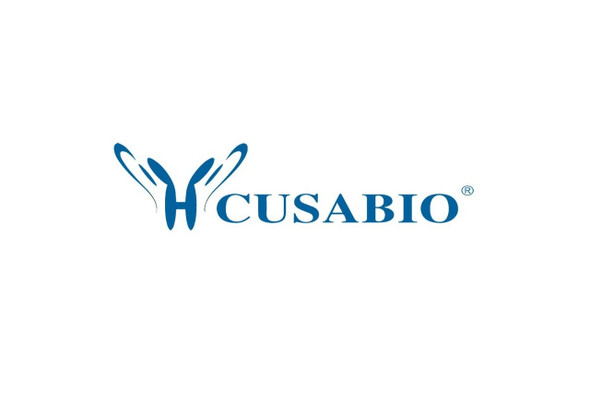Cusabio Human Recombinants
Recombinant Human Double-stranded RNA-specific adenosine deaminase (ADAR) , partial | CSB-EP001324HU
- SKU:
- CSB-EP001324HU
- Availability:
- 13 - 23 Working Days
Description
Recombinant Human Double-stranded RNA-specific adenosine deaminase (ADAR) , partial | CSB-EP001324HU | Cusabio
Alternative Name(s): 136KDA double-stranded RNA-binding protein ;p136Interferon-inducible protein 4 ;IFI-4K88DSRBP
Gene Names: ADAR
Research Areas: Transcription
Organism: Homo sapiens (Human)
AA Sequence: MNPRQGYSLSGYYTHPFQGYEHRQLRYQQPGPGSSPSSFLLKQIEFLKGQLPEAPVIGKQTPSLPPSLPGLRPRFPVLLASSTRGRQVDIRGVPRGVHLRSQGLQRGFQHPSPRGRSLPQRGVDCLSSHFQELSIYQDQEQRILKFLEELGEGKATTAHDLSGKLGTPKKEINRVL
Source: E.coli
Tag Info: N-terminal 6xHis-SUMO-tagged
Expression Region: 1-176aa
Sequence Info: Partial
MW: 35.6 kDa
Purity: Greater than 90% as determined by SDS-PAGE.
Relevance: Catalyzes the hydrolytic deamination of adenosine to inosine in double-stranded RNA (dsRNA) referred to as A-to-I RNA editing. This may affect gene expression and function in a number of ways that include mRNA translation by changing codons and hence the amino acid sequence of proteins; pre-mRNA splicing by altering splice site recognition sequences; RNA stability by changing sequences involved in nuclease recognition; genetic stability in the case of RNA virus genomes by changing sequences during viral RNA replication; and RNA structure-dependent activities such as microRNA production or targeting or protein-RNA interactions. Can edit both viral and cellular RNAs and can edit RNAs at multiple sites (hyper-editing) or at specific sites (site-specific editing). Its cellular RNA substrates include: bladder cancer-associated protein (BLCAP), neurotransmitter receptors for glutamate (GRIA2) and serotonin (HTR2C) and GABA receptor (GABRA3). Site-specific RNA editing of transcripts encoding these proteins results in amino acid substitutions which consequently alters their functional activities. Exhibits low-level editing at the GRIA2 Q/R site, but edits efficiently at the R/G site and HOTSPOT1. Its viral RNA substrates include: hepatitis C virus (HCV), vesicular stomatitis virus (VSV), measles virus (MV), hepatitis delta virus (HDV), and human immunodeficiency virus type 1 (HIV-1). Exhibits either a proviral (HDV, MV, VSV and HIV-1) or an antiviral effect (HCV) and this can be editing-dependent (HDV and HCV), editing-independent (VSV and MV) or both (HIV-1). Impairs HCV replication via RNA editing at multiple sites. Enhances the replication of MV, VSV and HIV-1 through an editing-independent mechanism via suppression of EIF2AK2/PKR activation and function. Stimulates both the release and infectivity of HIV-1 viral particles by an editing-dependent mechanism where it associates with viral RNAs and edits adenosines in the 5'UTR and the Rev and Tat coding sequence. Can enhance viral replication of HDV via A-to-I editing at a site designated as amber/W, thereby changing an UAG amber stop codon to an UIG tryptophan (W) codon that permits synthesis of the large delta antigen (L-HDAg) which has a key role in the assbly of viral particles. However, high levels of ADAR1 inhibit HDV replication
Reference: Molecular cloning of cDNA for double-stranded RNA adenosine deaminase, a candidate enzyme for nuclear RNA editing.Kim U., Wang Y., Sanford T., Zeng Y., Nishikura K.Proc. Natl. Acad. Sci. U.S.A. 91:11457-11461(1994)
Storage: The shelf life is related to many factors, storage state, buffer ingredients, storage temperature and the stability of the protein itself. Generally, the shelf life of liquid form is 6 months at -20?/-80?. The shelf life of lyophilized form is 12 months at -20?/-80?.
Notes: Repeated freezing and thawing is not recommended. Store working aliquots at 4? for up to one week.
Function: Catalyzes the hydrolytic deamination of adenosine to inosine in double-stranded RNA (dsRNA) referred to as A-to-I RNA editing
Involvement in disease: Dyschromatosis symmetrica hereditaria (DSH); Aicardi-Goutieres syndrome 6 (AGS6)
Subcellular Location: Isoform 1: Cytoplasm, Nucleus, Note=Shuttles between the cytoplasm and nucleus (PubMed:7565688, PubMed:24753571), Nuclear import is mediated by TNPO1 (PubMed:24753571), SUBCELLULAR LOCATION: Isoform 5: Cytoplasm, Nucleus, Nucleus, nucleolus
Protein Families:
Tissue Specificity: Ubiquitously expressed, highest levels were found in brain and lung (PubMed:7972084). Isoform 5 is expressed at higher levels in astrocytomas as compared to normal brain tissue and expression increases strikingly with the severity of the tumor, being higher in the most aggressive tumors.
Paythway:
Form: Liquid or Lyophilized powder
Buffer: If the delivery form is liquid, the default storage buffer is Tris/PBS-based buffer, 5%-50% glycerol. If the delivery form is lyophilized powder, the buffer before lyophilization is Tris/PBS-based buffer, 6% Trehalose, pH 8.0.
Reconstitution: We recommend that this vial be briefly centrifuged prior to opening to bring the contents to the bottom. Please reconstitute protein in deionized sterile water to a concentration of 0.1-1.0 mg/mL.We recommend to add 5-50% of glycerol (final concentration) and aliquot for long-term storage at -20?/-80?. Our default final concentration of glycerol is 50%. Customers could use it as reference.
Uniprot ID: P55265
HGNC Database Link: HGNC
UniGene Database Link: UniGene
KEGG Database Link: KEGG
STRING Database Link: STRING
OMIM Database Link: OMIM






